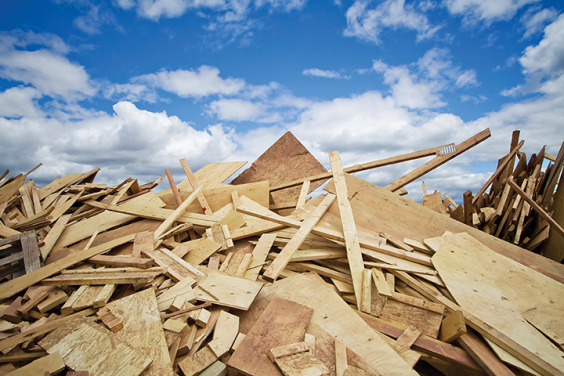Lafarge Bath has a proposal to replace coal in its cement plant with low carbon fuels like weathered treated wood (such as railway ties and utility poles), construction and demolition materials, and asphalt shingles.
Research team results... »
Cement 2020's goal is to replace imported coal with cleaner, local, renewable fuels.

Lafarge Canada Inc, Natural Resources Canada, the Queen’s Institute for Energy and Environmental Policy and Carbon Management Canada announced today that they are joining forces and investing more than $8 million to develop innovative solutions to power Lafarge Canada’s cement plant in Bath, Ontario, by re-using local surplus materials as low carbon fuels.
This multi-partner initiative intends to produce low emission, low carbon fuels from local supplies such as construction and demolition site debris (wood based), railway ties, and other energy containing materials that aren’t presently recycled. The results of this full-scale demonstration program will enable the Canadian cement industry to adopt low carbon fuels faster, making the industry more competitive while providing better local value to local communities and, importantly, reducing carbon emissions.
"Our commitment is to build better cities and communities. Being a responsible neighbour and sustainable partner in the community where we live, work and raise our families is part our core values,” said Bob Cartmel, President and Chief Executive Officer in Eastern Canada for Lafarge Canada Inc. “We are delighted to bring this world class demonstration initiative to the Canadian cement industry. We believe that this project is exactly in line with our mission of building better cities by lowering our carbon footprint, making use of local fuel supplies, and creating local sustainable jobs.
In meeting Canada’s extensive infrastructure needs, the Canadian cement industry currently emits about 3.8% of the country’s carbon dioxide (CO2) emissions and about 30-40% of those emissions are due to fossil fuel use. With the help of its partners, Lafarge Canada’s project will enable the Bath cement plant to use renewable, low carbon fuels that can be found locally, reducing its own greenhouse gas emissions, making use of materials that our cities and towns don’t currently re-use, and offer a sustainable alternative to the industry at large.
Carbon Management Canada (CMC), a network of Centres of Excellence that supports research to reduce CO2 emissions, is funding Dr. Mabee, Dr. Pollard, and their team’s low carbon fuel research with a $400,000 grant over three years. Queen’s University will evaluate the life cycle benefits of low carbon fuels in the cement industry as well as in-depth validation of expected emission reductions.
“We will be measuring the impact of low carbon fuels in a real kiln, in a real plant, making real cement, said Dr. Warren Mabee, director of Queen's University Institute for Energy and Environmental Policy and lead investigator on the joint project with Lafarge Canada. “This project will give us a very good sense of how these fuels will perform in the real world.”
Natural Resources Canada is awarding $2.68 million to Lafarge Canada to construct this full-scale demonstration plant.
“Through the ecoENERGY Innovation Initiative, our Government is investing in innovative clean energy technologies that create jobs, generate new economic opportunities and protect the environment,” said the Honourable Joe Oliver, Canada’s Minister of Natural Resources. “This program demonstrates our tangible support for energy projects that drive energy innovation.”
Other project partners include Pollution Probe, WWF Canada, Queen’s University, the Cement Association of Canada, Mesa Bioenergy, Scott Environmental, and Rail Link, a Metis company.
About Lafarge Canada Inc.
Lafarge Canada Inc. is Canada's largest provider of solutions to the construction and development industry. With more than 6000 employees across Canada, our mission is to provide construction solutions that build better cities and communities. The cities where Canadians live, work, and raise their families along with the infrastructure that supports their communities such as roads, bridges, transportation links, water, and waste management benefit from the solutions provided by Lafarge.
Through our Sustainability Ambitions for 2020, Lafarge is committed to providing solutions using sustainable manufacturing practices and improving the environment in and around its operations. At locations across Canada, we have worked to reduce carbon dioxide emissions, restore wetlands for native plants and animals, and identify waste materials that can be recycled and used in our operations. More information is available on Lafarge Canada’s website.
About Carbon Management Canada
Carbon Management Canada is a network of Centres of Excellence supported by federal and provincial governments as well as industry. CMC is a community of more than 140 researchers, industry and government practitioners with the vision, commitment and enthusiasm needed to reduce CO2 emissions in the fossil energy industry and other large stationary emitters to zero.